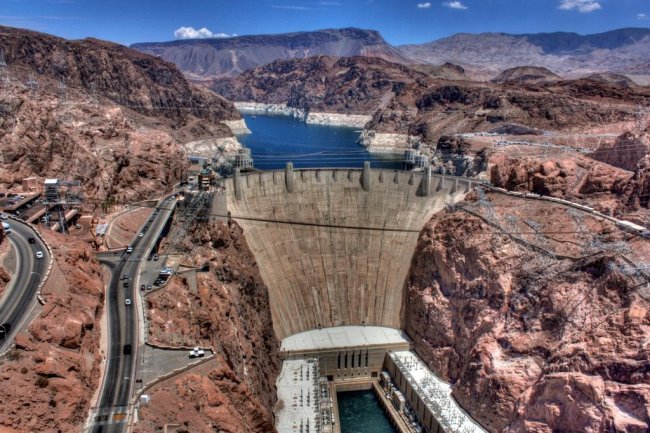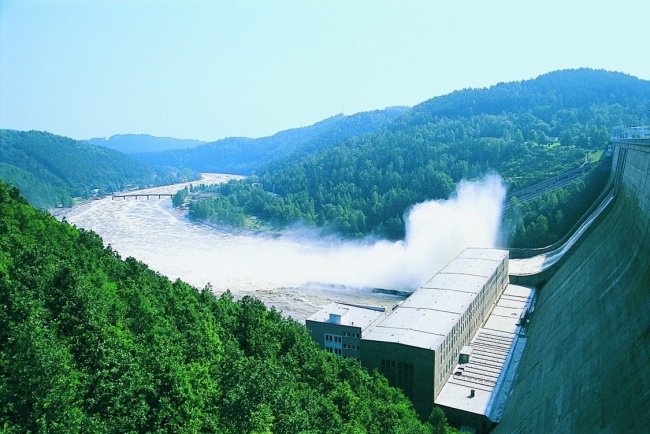Hydropower plays a critical role in accelerating the clean energy transition
While in recent years media and public attention has focused mainly on solar and wind farms, renewable energy sources have a very different king. it hydroelectric plantswhich last year produced a record 4,200 TWh of electricity. They are especially important in fast-growing economies.
According to a special report by the International Energy Agency (IEA), the "forgotten giant" of low-carbon electricity needs drastic policies and investments to support the faster expansion of solar and wind energy.
Today, hydropower plays a key role in the clean energy transition, not only because of the vast amount of low-carbon electricity it generates, but also because of its unparalleled ability to provide flexibility and energy storage.
Many hydroelectric plants can ramp up and down their power output very quickly compared to other power plants such as nuclear, coal and gas.This makes sustainable hydropower an attractive basis for integrating more wind and solar power, whose output can vary depending on factors such as the weather and the time of day or year.
The total installed capacity of hydropower plants worldwide last year reached 1,292 GW. Hydroelectric plants account for a large share of total electricity production, for example in Norway (99.5%), Switzerland (56.4%) or Canada (61%).
Storage hydroelectric power plants are very important because they store energy and compensate for varying energy consumption, mainly because nuclear and thermal power plants respond to changes in electricity consumption in the power system much more slowly than hydroelectric plants.
Renewable hydropower plants have the third largest future potential, according to an IEA analysis. However, their construction is currently hampered mainly by the lack of space for them in densely populated areas.
According to the "Special Report on the Hydropower Market", which is part of a series of IEA reports on the renewable energy market, global hydropower capacity is expected to increase by 17% between 2021 and 2030, mainly driven by China, India, Turkey and Ethiopia.
For example, India produces thirteen percent of all the electricity it uses. In addition, a giant dam with a power plant of 2 GW is being built, which will further increase this volume. In China, a world leader in the use of renewable resources, hydroelectric capacity reached 355 GW last year.
However, in the past year, Brazilians have mostly "taken away" hydroelectric projects.First of all, they were helped by the Belo Monte Dam, which is located on the Xingu River in the north of the country. Construction began in 2011 and its full capacity, which it should reach in the coming years, is 11.2 MW.
The electricity produced will be used by up to sixty million people. The construction cost 11.2 billion dollars. With the completion of the hydroelectric plants, in terms of installed capacity, Brazil overtook the United States and ranked second in the world. China is in first place.
The Solomon Islands have revealed a plan to build their own 15MW hydroelectric plant. This should allow this small country in Oceania to reduce gas consumption by up to 70 percent.
According to the UN, there are currently almost 14,000 different projects for the construction of small hydropower plants in the world - for example, in Denmark alone, about four hundred are currently approved.
Despite all these achievements, projected global growth for the 2020s is almost 25% slower than hydropower growth in the previous decade.
To reverse the expected growth slowdown, governments need to take a series of decisive policy actions to address key challenges to faster hydropower deployment, according to the report.
These measures include ensuring long-term revenue transparency to ensure the economic viability and sufficient attractiveness of hydropower projects for investors, while ensuring strict sustainability standards.
In 2020hydropower provided one-sixth of global electricity generation, making it the largest source of low-carbon energy and more than all other renewables combined.
Its production has increased by 70% over the past two decades, but its share of the world's electricity supply has remained stable due to increases in wind power, solar PV, natural gas and coal consumption.
However, hydropower currently meets the majority of electricity demand in 28 different emerging market economies and developing countries with a combined population of 800 million people.
"Hydropower is a forgotten giant of clean electricity and must be added back to the energy and climate agenda if countries are serious about meeting their targets," said Fatih Birol, IEA CEO.
“This provides valuable scale and flexibility to help power systems quickly adapt to changes in demand and offset fluctuations in supply from other sources. The benefits of hydropower could make it a natural way to ensure a safe transition in many countries as they shift to an increasing share of solar and wind power, provided hydropower projects are designed in a climate-resilient manner.
About half of the economically viable potential of hydropower worldwide is unused, and this potential is particularly high in emerging markets and developing countries, where it reaches almost 60%.
In its current political configuration, China will remain the largest hydropower market until 2030, accounting for 40% of global expansion, followed by India. China's share of global hydropower additions is declining due to less availability of economically attractive sites and growing concern about social and environmental impacts.
By 2030, it is projected that $127 billion, or nearly a quarter of global investment in hydropower, will be spent on upgrading aging power plants, mainly in developed economies.
This is especially true in North America, where the average age of hydroelectric plants is almost 50 years, and in Europe, where it is 45 years. The projected investment is well below the $300 billion needed in the report to modernize all of the world's aging hydroelectric plants.
In the report, the IEA outlines seven key priorities for governments seeking to sustainably accelerate hydropower deployment. These include establishing long-term pricing structures and ensuring that hydropower projects meet strict guidelines and best practices. This approach can minimize sustainability risks and maximize social, economic and environmental benefits.



